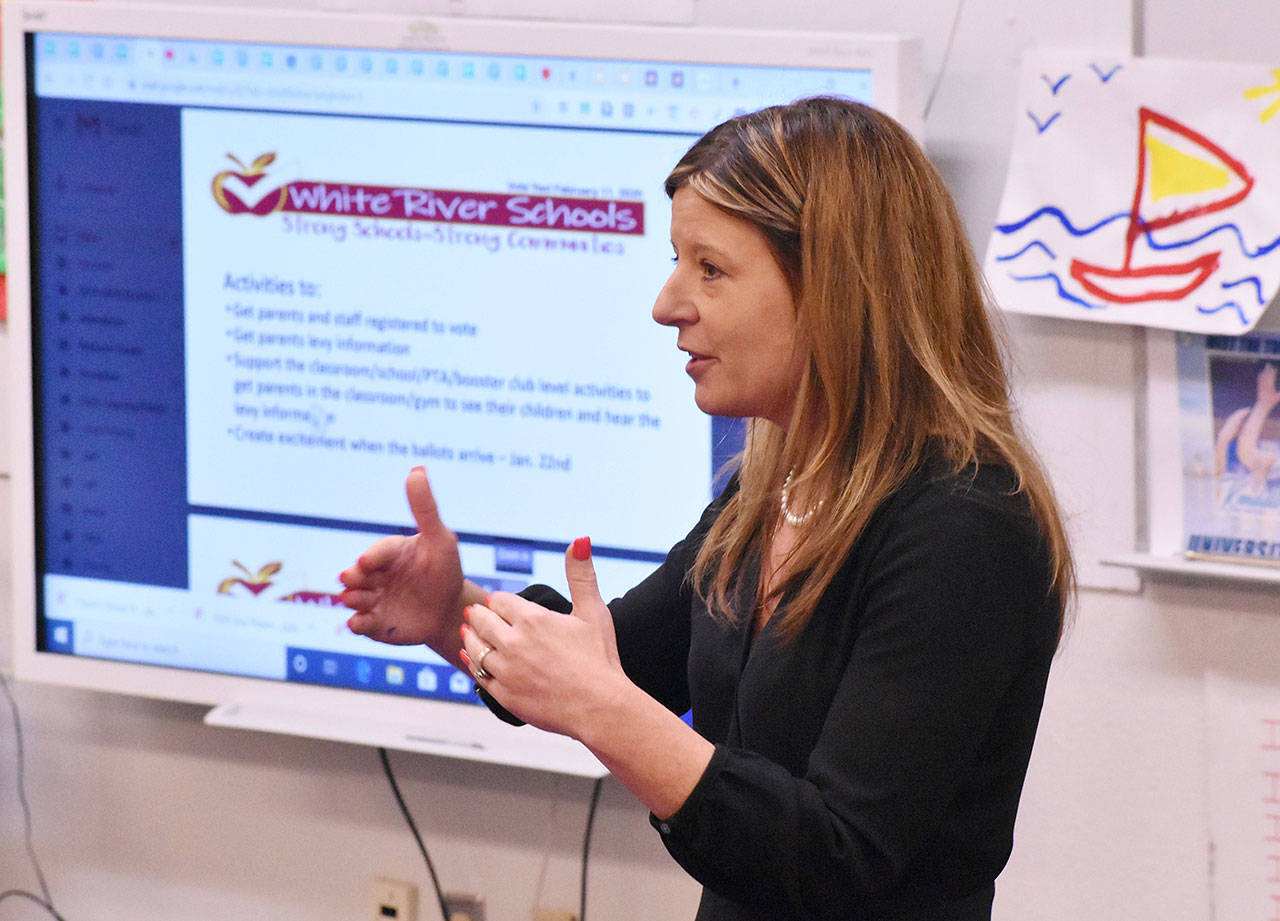Voters in both the Enumclaw and White River school districts will see ballots arriving in their mail boxes before long, as election officials are planning for a mail-out date of Jan. 24.
Both districts are seeking additional taxpayer dollars, but for different reasons. In Enumclaw, Proposition No. 1 is a six-year levy aimed at improving technology throughout the district; a few miles away, White River is pushing a broader “educational programs and operations” levy.
Ballots must be received by 8 p.m. on Election Day, Feb. 11. Ballots can be returned by mail or delivered to an Elections Department drop box; in both Enumclaw and Buckley, boxes are found in front of the community libraries.
Here’s a look at what each district is seeking and how it would impact taxpayer pocketbooks.
ENUMCLAW SCHOOL DISTRICT
The district’s tech levy is nothing new – boosters are simply hoping voters will continue to pony up the dollars being spent. Taxpayers first approved a tech levy in 2009 and authorized a six-year version in 2014.
According to a resolution passed by the Enumclaw School Board, the Feb. 11 levy would allow the district to: “Acquire and install instructional technology equipment and infrastructure, replace and upgrade computers, personal computing devices, hardware, software and telecommunication systems, provide related staff training and support to implement such technology improvements and make other improvements and upgrades to the District’s technology systems and facilities.”
If approved, the Feb. 11 levy would call for tax collections beginning in 2021 and running through 2026. The estimated levy rate is the same for the duration of levy, 35 cents for every $1,000 of assessed property value. That equates to $140 annually for the owner of property (home and land) valued at $400,000.
Those tax collections would add up to more than $1.7 million sent the district’s way during 2021. The amount would increase to an estimated $2.35 million in the final year.
The levy requires a simple majority for passage.
The district is making sure to point out the downward trend taxpayers have seen in their rates. The district was collecting $5.41 per $1,000 of assessed value in 2014 (for bonds and levies) and the total dipped to $2.88 for 2019.
In a video posted to the district’s website, Superintendent Mike Nelson said renewing the tech levy “will allow our students to communicate, collaborate and create as part of their learning process.”
There are clear benefits to making technology available, he added. “We’ve seen our test scores rise during the last six years and we believe the devices kids are using are helping to expand this knowledge.”
WHITE RIVER SCHOOL DISTRICT
If the Feb. 11 levy appears familiar to voters, it should. It’s the same request that was placed before district patrons last year and went down to defeat. Needing a simple majority to pass, the measure netted just 47 percent support in November.
The difference this time is in the approach. “We’re being more detailed and more specific about our needs,” said Assistant Superintendent Mike Hagadone.
As was the case just a few months ago, the math works like this: Proposition No. 1 asks voters to approve a levy increase of $1 for every $1,000 of assessed property value. So, the owner of property valued at $400,000 would pay another $400 annually.
Voters might recall years when levy rates were higher. That changed, however, when the state Legislature capped levy collections at $1.50 per $1,000 during its 2017 session. In 2018, White River voters approved a levy reflecting the state-imposed $1.50 lid. The picture changed again when, in 2019, the Legislature bumped the maximum allowable collection to $2.50.
The extra dollar is what White River unsuccessfully attempted to collect last fall. February’s Proposition 1 is a second attempt.
The extra dollar, the district says, is necessary to fund things like offerings in the arts, athletics and other extracurricular activities; to pay for student services including mental health, early learning and special education; and fund teachers, nurses, counselors, para-educators, playground staff and campus security officers.
A district-originated flier shows how revenues have declined, from a rate of $3.91 in 2015 to $3.35 in 2018. The Legislative mandate pushed the collection rate to $1.43 in 2019. If Proposition 1 passes in February, the rate could climb to a maximum of $2.50 per $1,000 of assessed value.
For the owner of property assessed at $400,000, levy passage would add $400 annually to the tax bill.


